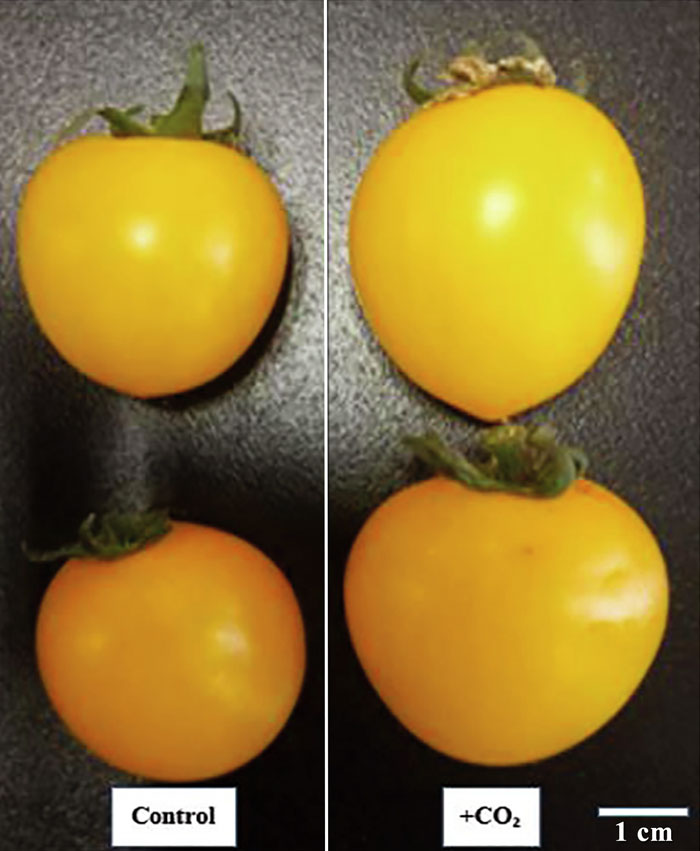| Tweet | Follow @co2science |
Paper Reviewed
Karim, M.F., Hao, P., Nordin, N.H.B., Qui, C., Zeeshan, M., Khan, A.A., Wu, F. and Shamsi, I.H. 2020. CO2 enrichment using CRAM fermentation improves growth, physiological traits and yield of cherry tomato (Solanum lycopersicum L.). Saudi Journal of Biological Sciences 27: 1041-1048.
According to Karim et al. (2020), approximately 14.6% of the 17.8 million hectares of farmland in China is occupied by greenhouses, making greenhouse farming an important segment of the food-producing economy. Focusing on this sector, the authors report that "CO2 insufficiency in the greenhouse is still a limiting factor which leads to an undesirable taste of vegetables and ultimately gives lower profit to the farmers." Hence, the eight researchers set out to see if they could utilize composting as a low-cost and efficient method of increasing the CO2 concentration within farming greenhouses to boost crop yields.
To accomplish their objective they grew cherry tomato (Solanum lycopersicum, cv. Huangfei) plants under control (local conventional cultivation) and CO2-enriched conditions in two large adjacent greenhouses in Huzhou, China. The elevated CO2 conditions were reached by constructing five composting units within one of the greenhouses, with each unit consisting of 25 kg of compost material (wheat straw) and 8 kg of moist manure. Additionally, three fungal species were supplied within the compost mixture to enhance the production of CO2 via fermentation. The resultant mixture was sufficient to raise and maintain the CO2 concentration of the elevated CO2 greenhouse between 1,000 and 1,500 ppm, whereas the concentration of the control greenhouse ranged between 480 and 570 ppm during the entire cultivation period.
Being able to successfully construct a low-cost method of efficiently raising the CO2 concentration of a greenhouse, however, represented only part of the authors' paper. The remainder focused on discussing the growth response of the tomato plants under the elevated CO2 conditions. And in this regard the authors report that CO2 enrichment had a significant impact on tomato growth and plant morphology, increasing plant height, stem diameter, leaf width and chlorophyll content by 37%, 17%, 14% and 11.4%, respectively, relative to control CO2 conditions. In addition higher CO2 enhanced net photosynthesis by 20%, single fruit weight by 38%, fruit diameter by 20% (see Figure 1 below), fruit number by a whopping 125% and yield by 38%.
Other key benefits of CO2 enrichment included an enhancement of tomato quality. Here, Karim et al. report that elevated CO2 "triggered an increase in peroxidase and catalase antioxidant enzymes," while also stimulating malondialdehyde content, which promoted the development of "an efficient antioxidant defensive system for reactive oxygen species." What is more, higher levels of CO2 significantly increased ascorbic acid (vitamin C) and the content of soluble sugars.
In light of all of the above, Karim et al. conclude that their composting method represents "the most economical and cost effective [method to increase CO2] for farmers as compared to other strategies such as direct gas injection, ventilation and chemical production." And, gratefully, this method "significantly improved quality and increased the yield of cherry tomatoes."

Figure 1. Difference of mature cherry tomato fruit grown under ambient (~525 ppm) and enriched (~1250 ppm) CO2 conditions in a greenhouse. Source: Karim et al. (2020).




